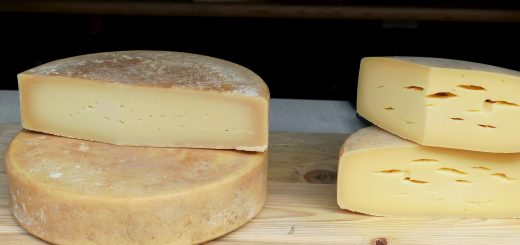Enzyme lab

Author(s): Octavian Horia Minda
Summary
| Subject | Green Biotechnology |
| Topic | Biotechnoligy |
| Age of students | 12-18 |
| Preparation time | 60Minutes |
| Teaching time | 100Minutes |
| Online teaching material (links for online material) | |
| Offline teaching material | Raw beef liverRaw ground beefRaw carrotsSugar cubesHydrogen peroxide ( H2O2 )Goggles, gloves, and lab apronsForcepsPlates or bowlsGraduated cylinder lab per station2 thermometers per lab station10 test tubes in rack per lab stationTest tube brushes and soap at sink |
Aim of the lesson
By the end of this lesson students will:
- 1) Students will be able to analyze the results of food with different concentrations of the enzyme catalase.
- 2) Students will be able to analyze how temperature affects enzyme activity
- 3) Students will be able to create a bar graph of their results
Activities
Students will determine the concentration of the enzyme catalase in different foods. Students will test if temperature affects enzyme activity.
| Name of activity | Procedure | Time |
| LAB SETUP | Cut liver and Carrot into small cubes, a size small enough to fit into your test tubes. Role ground beef into small balls the same size as above. Set-up a food station with liver cubes, ground beef cubes, carrot cubes, and sugar cubes, each in a beaker. Setup a liquid station with one beaker of the chilled hydrogen peroxide and another beaker of room temperature hydrogen peroxide. Chill the hydrogen peroxide in the refrigerator and bring out right before lab starts. Setup the student stations with 10 test tubes per rack, a graduated cylinder, 2 thermometers, and forceps. Prepare the sink for disposal of waste materials and clean-up of test tubes. | 20 min |
| Activities | Group students as lab partners. Each group should be assigned to a lab station. If there are more groups than stations, put two groups per station or make groups of four. Hand out lab safety equipment. | 5Xmin |
| Students conduct the lab, start filling out the handout, and clean their lab areas once finished | 40 min | |
| Enzyme liver lab | Students are to wear the safety equipment at all times. Goggles are mandatory for the entire lab. One lab partner goes to the food material station with 3 test tubes and puts the raw liver into the first test tube, cooked liver in the second test tube, and liver soaked in acid in the third test tube. Student returns to lab table and puts the test tubes in the test tube rack. (DO NOT put the hydrogen peroxide in the test tube yet). Put the test tube clamp at the top of the raw liver test tube. Another student obtains 5 mL of hydrogen peroxide using the 10 mL graduate cylinder. Student then puts the thermometer in the hydrogen peroxide to record an initial temperature (should wait 30 seconds). Student records data in the data table under initial temperature. Pour the 5 mL of hydrogen peroxide into the raw liver test tube. Immediately put the thermometer into the test tube. Take the test tube out of the rack using the clamp to watch the chemical reaction and watch the thermometer for the highest temperature. Record the bubble activity and the highest temperature reading in the data table. Once the chemical reaction is mostly over (small amount of bubbles), put the test tube back into the rack and remove the clamp from the test tube. Put the clamp on the next test tube and repeat procedures 4 through 7. Dispose of the lab supplies per teacher instructions. Clean up the lab table. | |
| Students return to their desks and then finish filling out the handout and graphs | 5min | |
| Completion of the two bar graphs: one graph with the bubble activity as the DV and the other graph with the change in temperature as the DV. Both graphs have the food material as the IV. | 30min | |
| Xmin |
Assessment
Describe here the assessment method of the lesson, if any. For example, if you plan on assessing your students with a quiz, include here questions and answer options with color-coding the correct answers.
Name: Row:
Enzyme Liver Lab
Date:
Period:
Driving Question: Why do we cook our food and put lime on fish / shrimp to make ceviche?
Background:
The purpose of this lab is for you to see how the environment can affect enzyme activity. This lab uses enzymes found in liver, called catalase. What you want to pay attention to is the amount of chemical reactions the enzyme will perform in different environmental conditions. These catalase enzymes will break down hydrogen peroxide ( H2O2 ).
Hypothesis:
Materials:
- Raw liver (chicken, beef)
- Liver soaked in acidic acid (.5 M) over night
- Liver cooked in microwave for at least 1 minute (cover with paper towel)
- Forceps to transfer the liver
- Goggles, and if desired gloves / lab aprons
- 3 test tubes in rack per lab group
- Test tube brushes and soap at sink
- 1 Thermometer per lab group
- 10 mL Graduated cylinder
- Hydrogen peroxide (3%)
Quantitative Data:
Material | Initial Temp° Celsius | Highest Temp° Celsius | Change in Temperature |
| Raw Enzymes | |||
| Cooked Enzymes | |||
| Acid + Enzymes |
Qualitative Data:
| Raw Enzymes | 0 | 1 | 2 | 3 | 4 | 5 | |
| Cooked Enzymes | 0 | 1 | 2 | 3 | 4 | 5 | |
| Acid + Enzymes | 0 | 1 | 2 | 3 | 4 | 5 |
Variables:
Independent:
Control Group:
Dependent: &
Constants:
Graphing:
Create two bar graphs before continuing. On one graph, use “change in temperature” as the dependent variable, and on the other graph, use “bubble activity” for dependent variable.
Analysis:
- Which food material had the most bubble activity?
- Which food material caused the largest temperature change of the hydrogen peroxide?
- Which food material had the smallest chemical reaction?
- Would the enzyme catalase work on other molecules besides H2O2?
- What type of biomolecule are enzymes?
- What is the monomer of this biomolecule? The graph on the right represents catalase activity based on temperature.
- Predict the body’s set-point for the catalase enzyme? ᵒ C
- Predict the temperature the enzyme will denature? ᵒ C
- What happens to the enzyme activity when the body’s temperature is 5 ᵒC off its set-point?
- Below, use the reactants to predict the gas created by the enzyme reaction in today’s lab. Then balance the chemical reaction.
H2O2 (l) →
H2O (l) + (g)
Experimental Errors:
Conclusion: Write a Claim Evidence Reasoning paragraph answering the driving question (Why do we cook our food and put lime on fish / shrimp to make ceviche).





